Pearl Harbor survivors share their stories on 75th anniversary of attack
Fewer than 200 survivors of the attacks on Pearl Harbor and other military bases in Hawaii are alive today.
Survivors of the attacks on Pearl Harbor gathered to commemorate the 75th anniversary of the assault that plunged the US into World War Two. Japan's surprise attack at Pearl Harbor killed 2,400 people – mostly servicemen aboard the USS Arizona, Oklahoma and Utah. Fewer than 200 survivors of the attacks there, and on other military bases in Hawaii, are alive today.

US Navy veteran James Leavelle, now 96, was a 21-year-old Navy Storekeeper Second Class at the time of the attack. He recalled how bullets bounced off the steel deck of his own ship, the Whitney, anchored just outside Honolulu harbour. A worse fate befell those aboard the Arizona, Oklahoma, Utah and other US ships that sank or capsized. "The way the Japanese planes were coming in, when they dropped bombs, they'd drop them and then circle back," Leavelle said.
Leavelle would be touched twice by the hand of history. After the war, he became a policeman in Texas. On 24 November 1963, he was the Dallas officer handcuffed to Lee Harvey Oswald when the accused assassin of President John F Kennedy was shot to death by nightclub owner Jack Ruby.
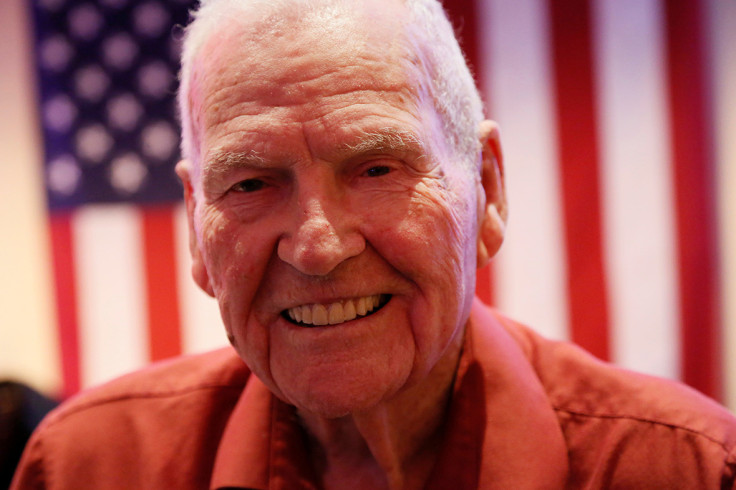
Milton Mapou, a 95-year-old veteran from Columbus, Ohio, visited Pearl Harbor for the first time since 1945 after veterans advocates raised money to pay for his trip. On 7 December 1941, Mapou was getting ready to sit down for breakfast on board the USS Detroit when he heard an explosion. He went topside to see a plane coming in low. It dropped a torpedo but missed the Detroit. Later, Mapou shattered a leg during the war when a kamikaze plane sunk his ship and cut it in half between Okinawa and Japan.
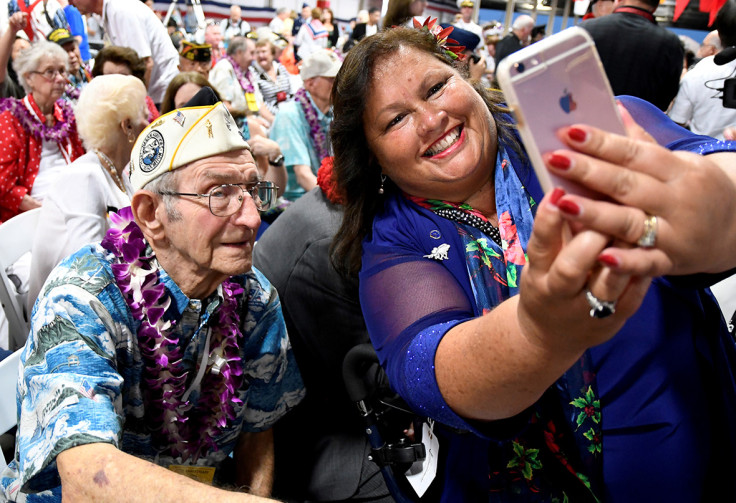
Lauren Bruner, then 21, was getting ready for church in 1941 on his battleship, the USS Arizona, when the alarm sounded. Bruner didn't know who was attacking until the planes got close enough for him to see the red Rising Sun Japanese insignia on their sides. The aircraft shot at "everything in sight," he said. Then an explosion tore through his battle station. "That's where the flames blew right through and cooked me right there," Bruner told AP.
With "everything burning," Bruner tried to get off the ship as fast as he could. But the water in the harbour 80 feet below – infused with leaked oil – was on fire, too, so jumping wasn't an option. Bruner and a few fellow shipmates shouted to a sailor on the ship moored next to the Arizona to toss over some rope. The six of them tied the rope and carried themselves hand-over-hand across the 100-foot expanse to the USS Vestal. The Arizona sank minutes later.
More than 2,300 servicemen died in the Japanese attack that plunged the United States into World War Two. Nearly half of those killed were on the Arizona, most still entombed in the wreckage. Bruner, now 96, said he doesn't know how long the Arizona's few remaining survivors will able to keep up the tradition. "It's getting close to being the end pretty soon," he said. "I think I've got the last spot," he said, expressing confidence he'll be the last of the survivors to go.
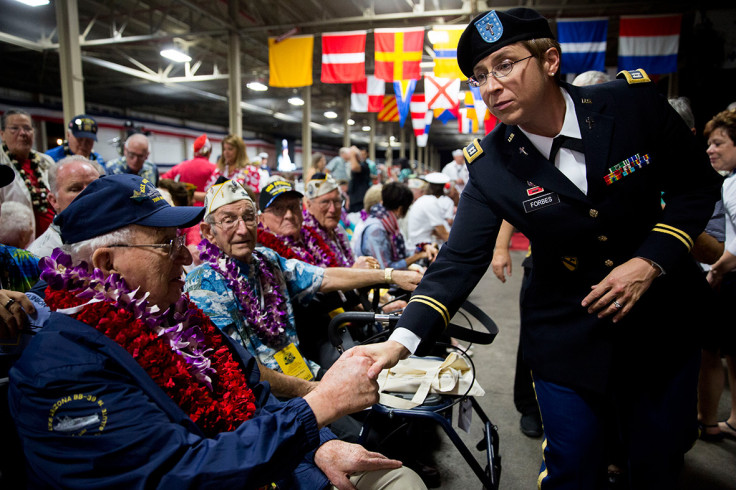
Donald Stratton, now 94, said he was with a group of sailors who had to tie a rope between two ships and then make their way across, hand-over-hand, despite being burned so badly that he no longer has fingerprints. "The fireball got us all," he told reporters. "We got a hold of a sailor on board the vessel and he throwed us a heaving line, which is a heavy line with a weight on it. And we pulled that across and proceeded to go hand over hand across to the vessel, 70 or 80 feet. I don't know how I made it."

Louis Conter, 95, said he initially helped pull victims and bodies out of the burning wreckage, and then spent days trying to extinguish the blaze. "We stayed on and pulled bodies and people off the fire, they were coming out of the fire and we laid them down on deck until we could get them into the boats to get them into the hospital," he recalled. "After about 40 minutes, we were getting water on the quarterdeck up to our knees, and somebody said 'abandon ship,' so we took what bodies we had and what people we had and put them in the motor launches and we got them to the hospital, and then we came back and we fought the fire again until Tuesday."
Conter said the anniversary is always an emotional moment. "It's always real hard. As you know, I've officiated at a lot of these burials on the Arizona afterwards there. People are buried there and it's always a tough proposition, but they're joining their shipmates for permanent duty and a permanent watch and we have to take a deep breath. We're all going to be there someday," he said.
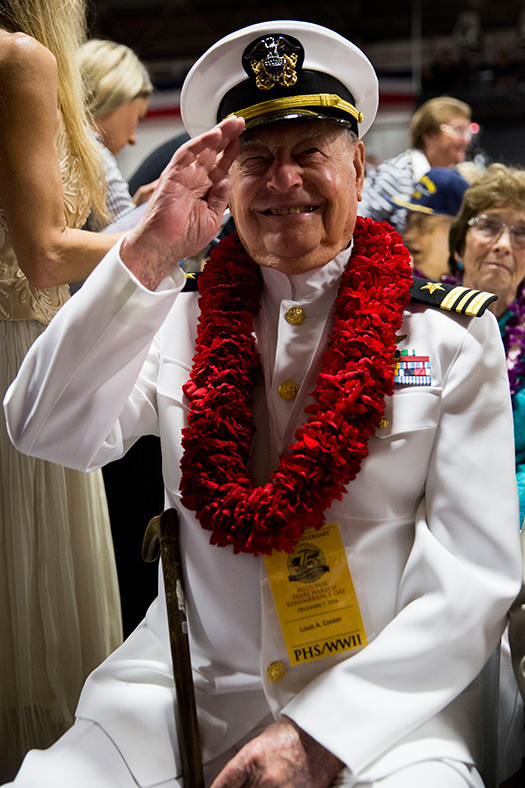
The commemoration of the 75th anniversary of the attack took place at a pier overlooking the memorial to the sunken Arizona, and began with a moment of silence at precisely the time the attack began. Wearing leis of Hawaiian flowers around their necks, about 350 US veterans of World War Two and their families received blessings and prayers for peace. A performance by the Navy's Pacific Fleet Band was made bittersweet by the knowledge that every member of the USS Arizona band, one of the Navy's best, died that day.
Two families held a private ceremony in which the ashes of crew members who survived the attack and died later were interred in a turret of the Arizona.



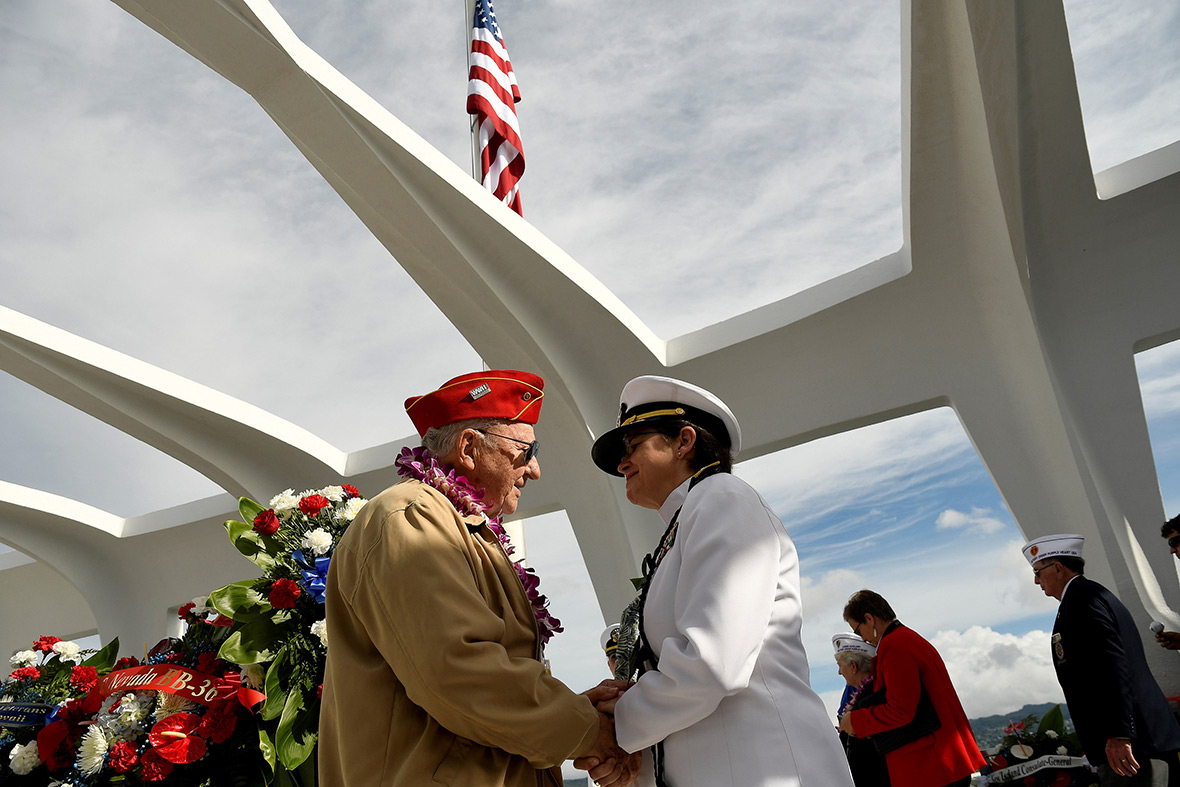










Visit the International Business Times UK Pictures page to see our latest picture galleries.
© Copyright IBTimes 2025. All rights reserved.






















